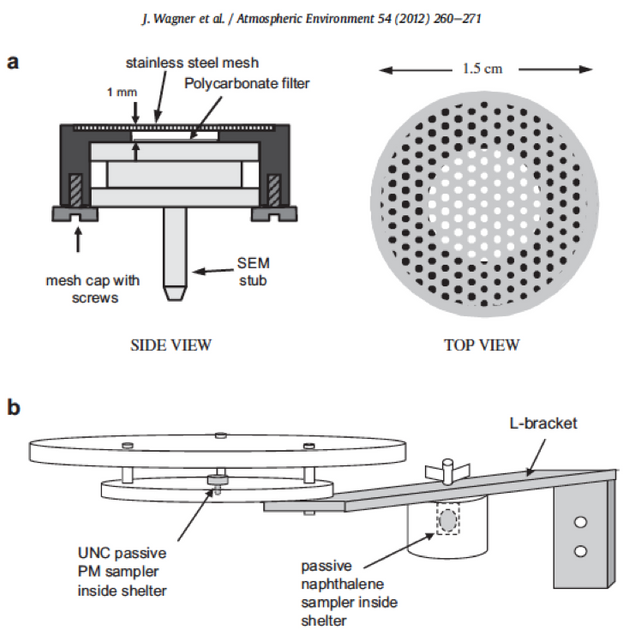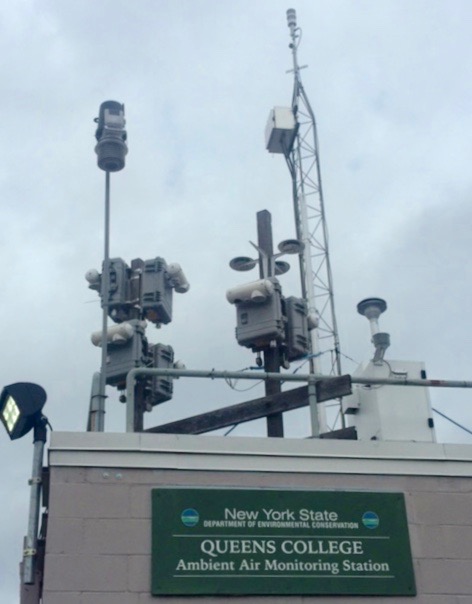Aim 1: UNC Passive Aerosol Samplers
Pilot test a novel passive aerosol sampler designed to measure long-term average concentrations of PM2.5 and PM10-2.5, and to characterize both particle size and composition. Quantify accuracy and precision with respect to co-located surface measurements using high cost regulatory monitors. Also explore the value of mobile monitoring as a way to augment spatial coverage of measurements in NYC.

The device: Originally developed by Jeff Wagner and David Leith at the University of North Carolina-Chapel Hill (UNC), the Passive Aerosol Sampler (UNC PAS) has been commercialized by the RJ Lee Group. It consists of a filter (typically polycarbonate) placed under a fine mesh screen and oriented so that particles settle gravitationally and by diffusion through the screen and onto the filter. The screen and housing measure just 1.5 cm in diameter, and is mounted between two flat metal plates to protect from precipitation. Each sampler is attached to a mounting bracket in the field.
Study Design Considerations: We hypothesize that the UNC sampler has the potential to provide relatively inexpensive measurements of long-term PM2.5 concentrations at high spatial densities. If this is confirmed, then we envision future studies using dense arrays of UNC samplers to characterize spatial patterns of long term PM2.5 concentrations, which could be used directly in health studies, for understanding hot spots and source-receptor relationships, and for ground truthing of satellite-based PM estimates. The pilot-scale study is validating the UNC sampler for 4-week and 12-week integrated samples against Federal Reference and Equivalent Method devices.

Sampling Strategy: We initially co-located UNC passive samplers at three currently-operating PM2.5 monitoring locations in Boston and San Francisco Bay Area, and at two locations in New York City, where Federal Reference or similar high-cost PM samplers are deployed. In many cases these are “supersites” where PM2.5 composition is also being measured.
At each site, we sample sequential 4-week periods spanning nearly one year (12 samples). Simultaneously, to pilot-test longer sampling durations, we sample four sequential 12-week periods at each site. We have also added duplicates, field blanks, and samplers with upside-down filters for 10 percent of the sampling events.
Data Analysis: After sampling (for one 4-week period or 12-week period), the sampling unit is removed from the mounting bracket and sent back to RJ Lee Group for analysis by scanning electron microscopy. Particles are automatically counted and sized one at a time, and analyzed for chemical composition. We retrieve data from the FRM and FEM monitors at each site, and compute 4-week, 12-week, and annual averages as appropriate, comparing samplers’ measurements to FRM/FEM averages for each time period.